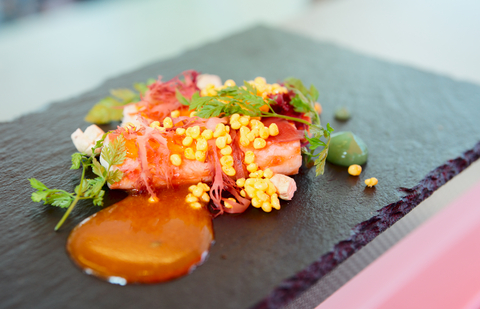Implications of the Modernist Cuisine Movement

The modernist cuisine movement started in the turn of the 21st century. It was first coined as molecular gastronomy in 1992 by the late Oxford Physicist Nicholas Kurti. It is a sub-discipline of food science, which seeks to learn more about the physical and chemical transformations of ingredients through investigations, explanations and finding practical usage. Modernist cuisine movement focuses on the evolution of cooking as well as artistic, social and technical factors that affect culinary and gastronomic phenomena. Molecular gastronomy became a sense of modernized cooking practiced by scientists and food professionals. Other terms that are used for this movement are techno-emotional cuisine, culinary physics and experimental cuisine.
The modernist cuisine movement is identified today as close to the works of Ferran Adria, a Catalan chef, at the elBulli restaurant. The evolution of the movement battles a formal doctrine and focuses on independent development and communal participation.
Some of the implications of having this food science sub-discipline are discussed in a book by Nathan Myhrvold called the Modernist Cuisine. The different principles demonstrated in the book are as follows:
1. Viewing cuisine as creative art. This entails a dialogue between the chef and the diner which makes food the primary medium allowing them to communicate. All sensory factors that are present during the dining experience contribute to the dialogue.
2. All culinary conventions, rules and traditions should be understood. However, these factors must not become a hindrance to development and creation of creative, new dishes.
3. Breaking culinary rules is powerful when done through creative means. Creating new and inspired dishes engage diners and let them live through and feel the dining experience.
4. Create food that defies the expectations of the diner. It is best to engage them to the work and make them lose their explicit or implicit expectations – make them intellectually engaged with the work. An example would be manipulating a dish that has familiar flavors but with unfamiliar forms.
5. Not only surprise could be obtained when presenting cuisine. There can be a burst of emotions, feelings, thoughts and reactions from the diners. A modernist chef does not only focus on the flavor and texture, but puts emphasis on the variety of emotional and intellectual responses that their clients would go through from the food.
6. Acknowledge ideas from other chefs. Do not just borrow ideas and inspirations without acknowledging from whom you got them. A part of the chef’s role in the modernist cuisine movement is having creativity, inventiveness and novelty with their work.
7. Ingredients from food science are powerful tools. They help in producing the dishes which would be impossible to create without them. These are emulsifiers, enzymes, hydrocolloids and others.
8. Resources from science and technology could also be used to produce and enable culinary inventions deviating from the traditional ones.
9. Using first-rate ingredients are part of the collection. They are the foundation of the cuisine, such as expensive ingredients like caviar or truffles.
The movement inspired a new craft for modernist chefs. The modernist cuisine movement was a project to elucidate culinary precision by investigating on phenomena involving cuisine and incorporate artistic values to experimental cooking.
